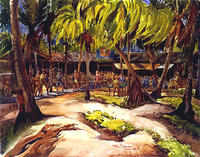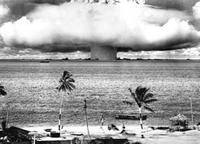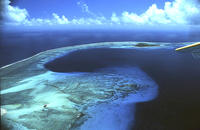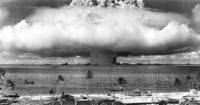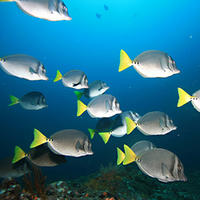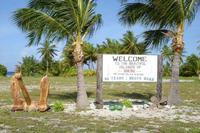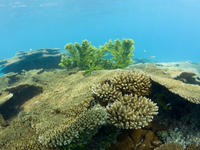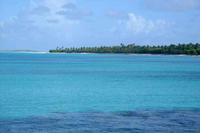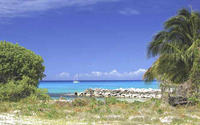You are in: Oceania -> Marshall Islands -> Bikini Atoll Nuclear... , and traditional search or Image Gallery will yield results of this site only
Bikini Atoll Nuclear Test Site
| Site number: | 1339 |
|
| Type of site: | Cultural | |
| Date: | 1946-1958 | |
| Date of Inscription: | 2010 | |
| Location: | Oceania, Marshall Island, Marshall Archipelago, Bikini Atoll | |
Up to 75 images are shown here. Click on each for more details or on Image Gallery for more images.
Six official UN languages:
Arabic,
Chinese,
English,
French,
Russian,
Spanish
Other languages: Alemmanic German, Breton, Czech, Danish, Dutch, Finnish, Galician, German, Hungarian, Italian, Japanese, Korean, Luxembourgish, Macedonian, Norwegian-nynorsk, Polish, Portuguese, Ripoarian, Slovak, Swahili, Swedish, Ukrainian, Vietnamese, Welsh
Other languages: Alemmanic German, Breton, Czech, Danish, Dutch, Finnish, Galician, German, Hungarian, Italian, Japanese, Korean, Luxembourgish, Macedonian, Norwegian-nynorsk, Polish, Portuguese, Ripoarian, Slovak, Swahili, Swedish, Ukrainian, Vietnamese, Welsh
| Description: | Between 1946 and 1958, the United States carried out 67 nuclear tests on the Bikini Atoll in the Marshall archipelago, including the detonation of the first H-bomb in 1952. This followed World War II and coincided with the beginning of the Cold War. Throughout its history, the atoll has symbolized the dawn of the nuclear age, and the powerful effects of nuclear testing are still visible in the Bravo crater and the ships sunk in the lagoon. These tests had lasting effects on the geology and natural environment of Bikini Atoll and on the health of those involved. This is the first site from the Marshall Islands inscribed on the World Heritage List. --WHMNet paraphrase from the description at WHC Site, where additional information is available. | |
| Bikini Atoll (also known as Pikinni Atoll) is a World Heritage listed atoll in the Micronesian Islands of the Pacific Ocean, part of Republic of the Marshall Islands. It consists of 23 islands surrounding a deep 229.4-square-mile (594.1 km2) central lagoon, at the northern end of the Ralik Chain (approximately 87 kilometres (54 mi) northwest of Ailinginae Atoll and 850 kilometres (530 mi) northwest of Majuro), now universally significant to the world[1]as follows: "Bikini Atoll has conserved direct tangible evidence .. conveying the power of .. nuclear tests, i.e. the sunken ships sent to the bottom of the lagoon by the tests in 1946 and the gigantic Bravo crater.... Through its history, the atoll symbolises the dawn of the nuclear age, despite its paradoxical image of peace and of earthly paradise. "Within Bikini Atoll, Bikini Island is the northeastern most and largest islet, measuring 4 kilometres (2.5 mi)long. About twelve kilometres to the northwest is the islet of Aomen. As part of the Pacific Proving Grounds it was the site of more than 20 nuclear weapons tests between 1946 and 1958. The first Westerner to see the atoll, in mid-1820s, was the German navigator and explorer Otto von Kotzebue, who named the atoll Eschscholtz Atoll after the Russian scientist Johann Friedrich von Eschscholtz. The atoll, however, has always been called Bikini by the native Marshall Islanders, from Marshallese "Pik" meaning "surface" and "Ni" meaning "coconut". The name was popularized in the United States not only by nuclear bomb tests, but because the bikini swimsuit was named after the island in 1946. The two-piece swimsuit was introduced within days of the first nuclear test on the atoll, when the name of the island was in the news. Introduced just weeks after the one-piece "Atome" was widely advertised as the "smallest bathing suit in the world", it was said that the bikini "split the atome". The Bikini Atoll was entered into the list of UNESCO World Heritage sites on August 2010. --Wikipedia. Text is available under the Creative Commons Attribution-ShareAlike License. | ||
| Source: | http://whc.unesco.org/en/list/1339 | |
| Reference: | 1. UNESCO World Heritage Center (http://whc.unesco.org/en/list/1339). 2. Wikipedia. | |



